The redesign of La Hacienda Alcaidesa Links Golf Resort
La Hacienda Alcaidesa Links Golf Resort in Spain has redesigned its Links course in a bid to make the venue one of the leading facilities in southern Europe. Here, we speak with course designer, Kurtis Bowman, about the project.
How did you get into golf course architecture?
I always loved golf as a youngster and knew that I wanted it to be a big part of my life. I tried to figure out how I could work in the industry and what career routes were available to me.
After enrolling at The Ohio State University, I asked my turf professor where we could do our internships and his reply was “whoever will hire you”. Being a golfer, the place that interested me most was, of course, Augusta National Golf Club, the home of The Masters. After being extremely persistent, I managed to get an interview with Marsh Benson, who oversaw golf course maintenance at Augusta National for nearly 30 years. This is where I was given the biggest break of my career at one of the world’s most iconic golf courses, becoming the first student from Ohio State to ever get a job there. Not only because it was great to have on my resume but, more importantly, it gave me a lot of belief – I thought, if I can do this, I can do anything.
After college, I worked briefly as an assistant golf course superintendent at Atlanta Country Club which had a PGA Tour event at the time called the BellSouth Classic. The course architect at Atlanta worked for Jack Nicklaus Design and I managed to beg him long enough for a job that he called Nicklaus in 1996 and managed to get me through the door. The great thing about this company was that there were so many talented architects to learn from. Jim Lipe, who was the senior architect, involved in some of Nicklaus’ best courses, particularly in North America and Mexico, really took me under his wing. I worked on some highly regarded courses in the US and Mexico including Mayacama in California and May River Golf Club in South Carolina, as well as Cabo del Sol, which is always rated in the top two in Mexico. I worked on nearly 50 golf courses in my time at Nicklaus Design.
In 2016, I started my own company with my first project being Santo Domingo Country Club in the capital city of the Dominican Republic.
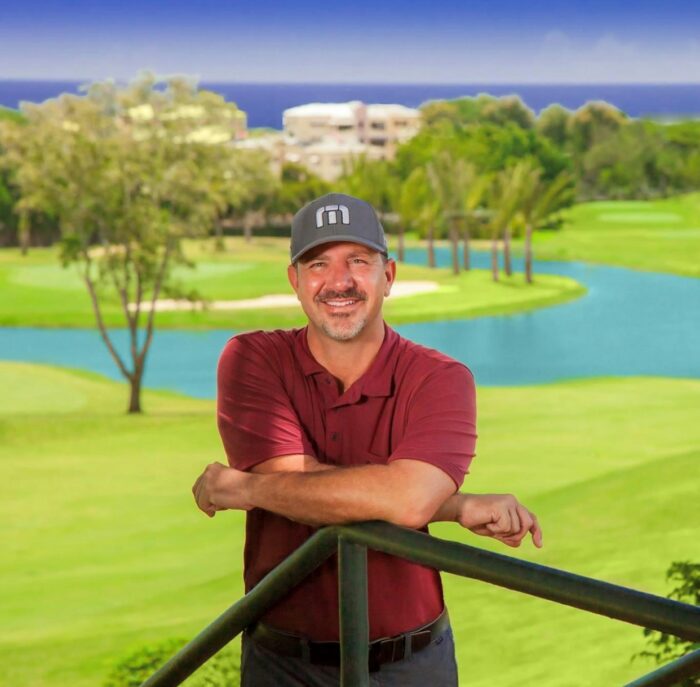
Kurtis Bowman
How would you describe your style as a course architect? What are the general trends?
My time at Augusta had a big influence on me and how I ultimately design golf courses. The way that golf course plays, with ample room off the tee allowing golfers to find their ball and have a shot into the green, as well as the strength of the greens, are two elements that feature in all of my projects.
I like to give golfers space and build a strategic layout for scratch or lower handicap golfers where they have to think and plot their way around, although it’s equally important to me to make my courses enjoyable for less experienced or golfers with a higher handicap.
Variety is a spice of life – and this certainly holds true on a golf course. With the greens, I like to include a variety in contouring and in the sizing of the greens. I like par threes to all play differently – I don’t want golfers to hit the same iron into every hole, I want them to use a different club, trajectory and shot shape. With par fours and fives, I also like to incorporate holes where golfers aren’t forced to use a driver. They can if they want, but they may opt for a long iron instead. All these elements together offer a diverse and memorable experience.
You’ll tend to see an ‘easier’ opening hole in my designs to ease golfers into the round. Donald Ross once said that the first hole should be like “a warm handshake to begin the round” and I couldn’t agree more. The green on Alcaidesa Links’ first hole is one of the most subtle and it’s a par five that gives golfers the early opportunity for a birdie or even eagle.
There are always a few elements of my design that might be considered a little controversial, with things like a false front on some greens that repels the ball. I love when people are sat having a drink after the round and debating whether a certain feature is amazing or if it’s unfair. I think it’s a good thing to get golfers talking about the layout. Obviously, I don’t want golfers to be critical of many design elements on the course, but a few that toy with their minds adds to the experience. It’s good to have golfers worried about something out on the course next time they play it, I don’t mind that. Trying to mentally overcome something they are uncomfortable with is all part of the game with a good course design.
Was the brief to make this a really good ‘resort course’ or a challenge for lower handicap golfers?
With the space and land available, this was never going to be a long golf course. We didn’t aim to make a golf course that could hold a men’s major or European Tour event. The brief and objective was to create a golf course that resort guests would like playing, have lots of fun and want to return to over and over again.
I designed a resort golf course that can host tournaments, rather than a tournament course that resort guests could play. This was a directive agreed by the ownership.
It was important to me to give golfers space, especially on a resort course. Keep the golf moving, give them room off the tee, and build most of the greens in a way that allows any level of golfer to roll the ball up.
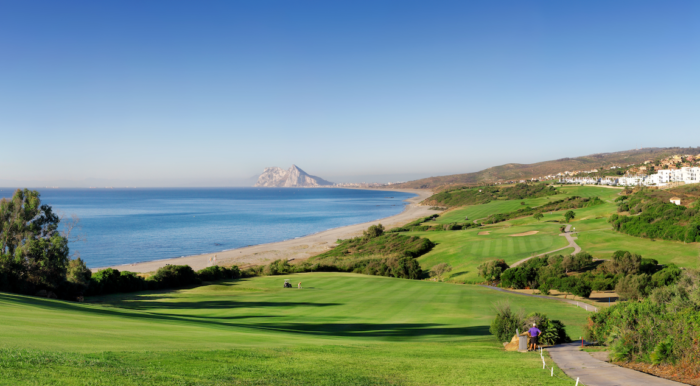
What are the key characteristics of the course and what are the different challenges that golfers will face? What are the significant changes from the original course?
We built new tees, greens and bunkers to make an entirely new strategy for golfers playing the course. A handful of holes that were totally reinvented, particularly on the final stretch coming back to the clubhouse. In part to make room for some of the new developments such as the five-star hotel, but also because some of them needed to be dramatically improved.
I wanted to connect the golf course to the ocean. There were some holes that were close and you couldn’t even see the sea prior to the redesign. The tees were further away and plants would be up to five metres high blocking the view. Now, we really have a golf course that is benched in on the edge of the ocean and there’s nothing else like it in Spain.
The main challenge on the course is the wind, which we carefully considered throughout the design process. One comes from the land which they refer to in Spain as Poniente and one comes from the sea which they call Levante. Depending on which wind you get, the golf course will play dramatically differently. So, one of the things I did with the design was build freeform / ribbon tees which are basically tees that aren’t totally flat, some parts are flat but they roll and tumble just like the golf course does, but there’s lots of tee space – something we didn’t have before the redesign – which gives the greenkeepers the opportunity to bring them up (Levante) or back (Poniente) depending on the type of wind. Some holes, such as the fourth, are driveable if you get the Poniente wind behind you.
Most of the greens – around 90 percent – allow golfers to run the ball up on the green, land the ball short and bounce it up on the green like most links courses in the UK. Because the wind is so strong at La Hacienda, these greens don’t have to be maintained to a very fast speed. We actually don’t want them running at 12 or 13 on the stimpmeter as the ball would just be blown away. The way I designed the golf course is with more interesting contours in the greens so they can still be maintained at decent speed, say nine or 10, but golfers can still play in the wind without their ball moving on the green.
How important is the issue of sustainability to you when building a golf course?
It’s absolutely critical. One of the worst things that can happen for a golf course architect is to build a golf course that is not sustainable or can’t be maintained. We obviously want the course to last and be enjoyed into the future.
With regards to turf types, we have used warm-season turf, predominantly Bermuda grass, on both the greens and fairways which will allow for less herbicides to be used and will still perform well in the summer. We used tall fescue around the bunkers that gives it a good contrast, colour and texture but is also one of the cool season varieties which can be used in that area.
We also used a native fescue mix in the far out-of-play areas. We don’t mind if it browns out in the summer, that’s actually what we want to give the true ‘links’ feel. There’s not a big chemical input from fertilisers, herbicides, pesticides in the native areas – we want these to stay authentic and rustic.
We built the tees in a way that they don’t have to be maintained with walk mowers. Rather than sending out three or four greenkeepers to mow the tees, these can be done with triplex or even fairway mowers which is far less labour insensitive.
With regards to the greens, they have been designed with contours which, as discussed earlier, don’t have to be the fastest. If you build subtle flat greens, they tend to not be exciting or interesting unless they are maintained at a very high speed. The contouring will still make them some of the most interesting in the country, despite not being the fastest.
When and how did your involvement in the La Hacienda project come about?
In my time working in the Dominican Republic, I was introduced to Javier Illán, president of Millennium Hospitality. In 2020, I flew to Spain to visit Javier and discuss his big plans for La Hacienda, and we hit it off straight away. I instantly fell in love with the property and saw the potential. Javier’s vision was exactly what I wanted to hear. He was prepared to give us the necessary budget to achieve what we wanted – which was to rework the entire golf course and dramatically improve it.
It was my first golf course in continental Europe. It was a dream project for a golf course architect, and I was going to do whatever it took to win that project. This is the type of site that can change the trajectory of one’s career.
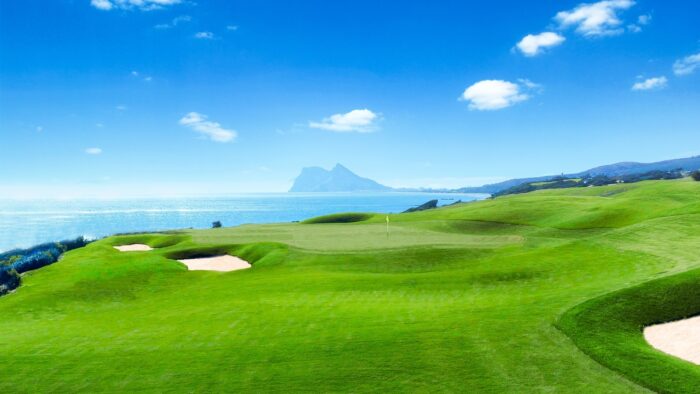
What were your impressions when you first saw the site and the original course layout?
Obviously, I was taken aback by the spectacular ocean views – some of the best I’ve ever seen on a golf course globally. The fact you can see the Mediterranean from the entire course, as well as the Rock of Gibraltar, just took my breath away.
I instantly saw how much potential the site had, it just needed a more memorable golf course to match the setting. I could tell that the initial course design was put together with minimal budget. It was just a golf course with greens and tees, with no real consideration of the golfers’ experience and how it should accentuate the stunning sea views.
Most people who played it never talked about the golf course itself, just the views. This is something we really wanted to change… if we could create a golf course that matched the setting, then it would be something pretty special.
Where did your inspiration for the new Alcaidesa Links course come from and have you tried to include any elements of your favourite courses in the world?
My inspiration came from the links courses in California, particularly Cypress Point Club and Pebble Beach Golf Links. When I first saw Alcaidesa Links, I said that this should be the Pebble Beach of Spain! Of course, the site is very different, but it’s definitely the most dramatic oceanfront links course in Spain and, in my opinion, has the bones to be on the shortlist as one of the best golf courses in the country.
One of the biggest differences, though, is that Pebble Beach has some of the smallest greens in America, while Alcaidesa Links will have some of the largest greens in Spain. As I said, I generally tend to prefer larger greens and a variety of sizes – this particularly works on a resort golf course so you can spread the wear which helps from a maintenance perspective.
Can you pick out a couple of holes on the course that you especially like and tell us a bit about them?
The holes along the ocean obviously stand out. The fifth hole, a downhill par five, will be the most photographed hole in Spain. When you stand on the tee, you’re looking straight down the coast of the Mediterranean and straight at the Rock of Gibraltar. On days that you get the Poniente wind, you’ll be able to see all the way over to Morocco.
We reshaped this hole entirely and moved a huge amount of earth to get this to play the way we wanted it to play. We changed the fairway to create lies to suit golfers, giving them a legitimate chance to reach the green in two or play a decent lay-up shot. Before, the lies were always on awkward downhill slopes and extraordinarily difficult. The green wasn’t originally on the ocean, it was around 60 yards away, so I slid the green down to where the 13th green was and then combined the two greens to make a huge double green right on the ocean’s edge. It’s now probably the largest green in Spain. This green is now incredibly dramatic and will be sure to get people talking and burn a hole in golfers’ memories.
The ninth hole was one of my least favourite and weaker holes of the original golf course. We moved the most earth on this hole to drastically improve it, making it one of the most enjoyable and one that I feel people will like the most. This is definitely the most different and enhanced holes, it’s now a truly beautiful golf hole. We moved the green left by 20 metres and cut it down and raised the fairway up, we also incorporated some fairway bunkers on the right-hand side of the hole so that it’s banked hard from right to left, still leaving ample fairway space for an uphill approach shot onto the green.
Other highlights include the par-three sixth, this used to be a forgettable hole where you played across a pond. We removed this pond and made it one of the most demanding holes on the golf course, despite being the shortest. It has a spectacular perched green with the Rock of Gibraltar right behind it. The 13th green is one of the most interesting on the course, as it connects with the aforementioned fifth as a double green. It has a St Andrews ‘links’ feel with some big contours, movements and unique pin positions. The Carbonera Lighthouse provides a spectacular backdrop to this hole.
In your opinion, what are the qualities of a good golf course and the characteristics that make you want to play it again and again?
Playability is the most important factor. It’s no fun for golfers if they keep losing balls on every hole and if it’s too difficult. Having said that, none of the best golf courses in the world are viewed as easy. Consequence and challenge and ‘risk versus reward’ are a key part of great golf. When you have a challenge in front of you and you overcome it, that is one of the best feelings you can get and that’s what keeps people hooked and makes the game so enjoyable. Golfers have to have fun, but also be challenged throughout the round.
Memorability is also critical. A golfer saying that they don’t remember a certain hole or green is a far worse insult for me as a course architect than saying they didn’t particularly like it or agree with it. When I look at great courses I’ve played, I can remember each and every hole when I’m done. I want to build courses that live in the memory.
Lastly, diversity and variety are what keeps people coming back. I want to be creative enough in the design that golfers will learn something new about the course each time they play it – whether that be avoiding a certain hazard, playing to a different part of a certain green, using a different club. When a golfer finishes their round, I want them to be instantly excited to play the course again to try and overcome a certain challenge or relive a memorable experience.
When the La Hacienda project is completed, what will it do to elevate the resort’s status on the world stage as a golf destination?
There are lots of great golf courses in the Costa del Sol. One thing it was missing was a great oceanfront links golf course. Now this has been added to the mix – along with the five-star hotel, real estate, clubhouse, practice facilities, beach club and halfway house – this has elevated the entire development. As great as the other venues nearby are, none of them are set in a location even close to La Hacienda. This is honestly one of the most dramatic and spectacular views I’ve seen from a golf course in the entire world.
Now you combine this with a great golf course that’s enjoyable to play for every level of golfer, it will definitely be in the conversation for one of the best courses in Spain and added to the list of must-plays for players touring the Costa del Sol.
Other major projects around the world:
Costa Navarino opens 36-hole development
The world’s first International Olympic Academy Golf Course and the neighboring Hills Course, as well as the new Hills Clubhouse, made their debut right at the start of the 2022 golf season. They provide the ideal complement to the destination’s existing signature golf courses, The Dunes Course and The Bay Course, and mean that players of all levels can now enjoy the challenge of four signature golf courses, within a 13km maximum distance, in Greece.
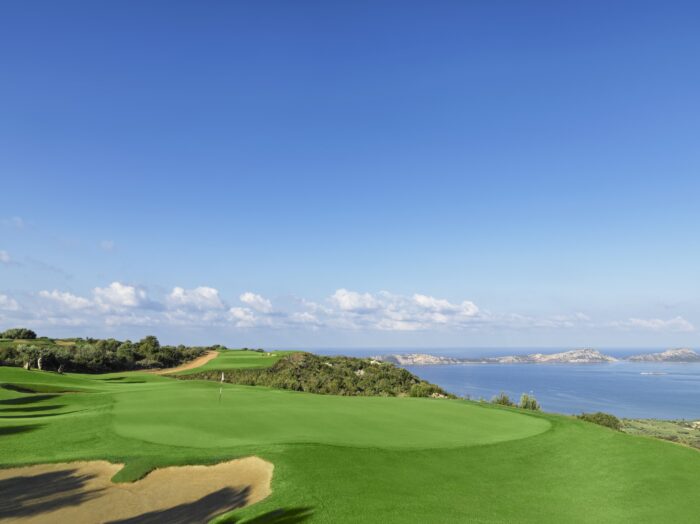
Designed by two-time Masters champion José María Olazábal and situated over 125 hectares overlooking the historic Bay of Navarino and the Ionian Sea, the new layouts are set in a unique location affording views to the sea, mountains and valleys. Measuring 6,366m, the International Olympic Academy Golf Course received widespread acclaim when it was played for the first time at the fifth Messinia Pro-Am in November. The Hills Course is slightly shorter at 6,280m in length, with both courses featuring an average green size of 669m², a 60-bay driving range and a 15,000m² short game area.
Olazábal said: “Over the past five years, we have worked hard to shape two courses that not only respect the stunning surroundings but that also fit as naturally as possible into the terrain.”
Vattanac Golf Resort opens world-class golf academy
Vattanac Golf Resort, the luxury Troon-managed golf course, has opened a world-class golf academy in Phnom Penh, Cambodia.
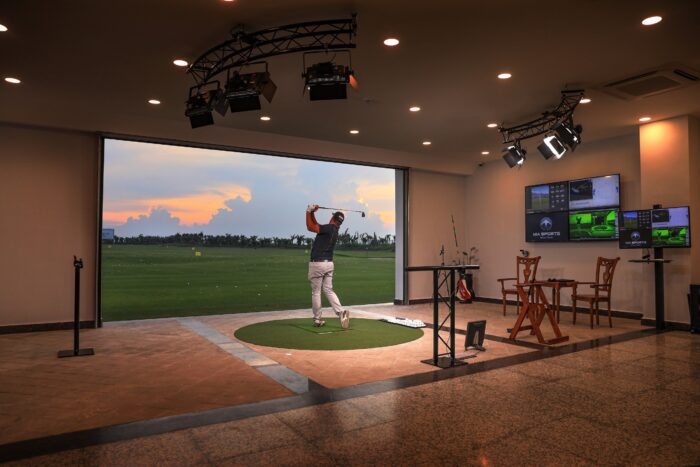
DJ Flanders, senior vice president at Troon International, commented: “The completion at Vattanac of a new academy is an incredibly important milestone in the overall evolution of the resort. This 40,000 square feet facility will enhance our overall asset and the experience we can offer to our guests. The ownership’s priority at Vattanac Golf Resort is to keep growing the quality and output of our business, and to further engage all components that Troon has to offer.”
Modry Las Golf Resort forges ahead with developments
Modry Las Golf Resort is forging ahead with a series of developments including new accommodation options, the introduction of a luxurious spa in the clubhouse and the launch of a multi-purpose jetty for watersports around the fabulous Polish lakes.
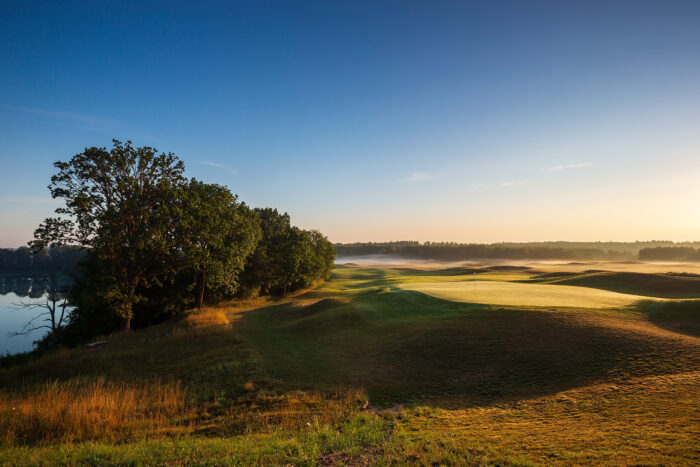
“We used 2021 to progress a number of important projects at the resort which included starting work on six new garden suites and the completion of our fabulous clubhouse which now offers guest facilities such as changing rooms, lockers and club storage,” explained Arthur Gromadzki, chairman of Modry Las.
“The changes, which include work both on and off the Gary Player-designed course, is a further illustration of our commitment to continually improve what we do at Modry Las.”















Let me tell You a sad story ! There are no comments yet, but You can be first one to comment this article.
Write a comment